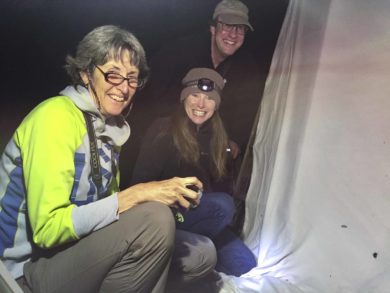Every moth counts — from the common to the rare. Even if you lack experience with these insects, you can contribute to the Vermont Moth Atlas. Report your sightings to iNaturalist.
Since 2013, professional biologists and volunteer naturalist have contributed moth observations to the Vermont Atlas of Life on iNaturalist. Many of us turn on special lights in our backyards on summer nights to find hundreds of moths and other insects gathering on our sheets, hunt fields and forest for day-flying moths, and place sugary bait out to attract hungry moths.
Many of these moths can be identified from good photographs (although some are impossible without dissection and examination under a microscope). With today’s amazing digital photography technology, coupled with the newer Peterson’s Field Guide to Northeastern Moths and web sites like iNaturalist, BugGuide, Moth Photographers Group, or Moths of Eastern North America Facebook Group, moth watching (aka mothing) has become increasingly popular.
You can help us record and map all moths– rare or common. Take digital photographs and submit your observations to Vermont Moths on iNaturalist. Finding moths can be as simple as leaving a porch light on and checking it after dark. There is much to discover about biodiversity right in our own backyard. Serious moth aficionados use special lights and baits to attract them. Check out this short introduction on how to start mothing. It’s easy and fun!







